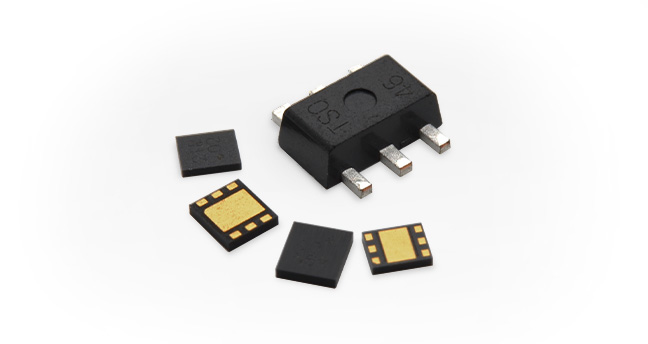Introduction of recommended articles
Technical information
Technical Guide Basic/Theory Edition
Description of features and function
- What is backflow prevention function? What is complete backflow prevention function?
- How to calculate the pull-up/pull-down resistance value inside the IC?
- What are ship function and shipping mode?
- What is ideal diode? What is the difference from discrete?
- What are differences among load disconnection, bypass, and Vout OR of step-up DC/DC
- What are power conversion efficiency and power supply efficiency? How is the efficiency measured?
- What are output voltage fixed products (Vout products) and output voltage externally adjusted products (FB products)?
- What are Nch open drain output and CMOS output?
- What is CL discharge (discharge function)?
- What kind of characteristics are the load-transient response and line-transient response characteristic?
- What is thermal shutdown/overheat protection?
- What is chip enable (CE function) and enable function (EN function)?
- What are pull-up and pull-down resistances? What is an unstable state?
- What are High voltage, Low voltage?
- What is a threshold?
- What is the soft start function and what is the difference from the inrush current prevention function
- What is The Under Voltage Lock Out (UVLO)?
- What are the characteristics of load stability and load regulation?
- Voltage Regulator Current Limiting Methods
DC/DC Converters
Voltage Regulators(VR)
Basics of Voltage Regulator
- What is a voltage regulator?
- Voltage regulator operation image
- Voltage regulator advantages and disadvantages
- Voltage regulator disadvantages: Loss and heat generation
- Deciding when to use voltage regulators or DC/DC converters
- Voltage regulator internal configuration
- Voltage regulator operation principles
Main Item and Characteristic of Voltage Regulator
Function of Voltage Regulator
Product Characteristics List/Comparison
Reset IC (Voltage detector / Watchdog Timer)
Basics of Voltage Reset IC (Voltage detector)
Features and Function of Reset IC (Voltage detector)
- Main characteristics of voltage detector : how to read SPEC - detect voltage / release voltage / hysteresis width
- Output current / ON resistance
- Release delay function
- Detection delay function
- Manual reset function
- Sense (VSEN) terminal separation function
- Function of voltage detector: unstable operation prevention function
- Function of voltage detector: hysteresis external adjustment function
Reset IC (Voltage detector) Design Edition
Technical Guide Design Edition
Design Support Tools
How to Use DC/DC Measured Electrical Characteristics Comparison Tool / Example of Use
How to Use Web DC/DC Simulation / Example of Application
- Characteristics / usage of Web DC/DC simulation
- Web DC/DC Simulation: confirmation of basic characteristics / comparison with observation result
- Web DC/DC Simulation: how to confirm the coil current under actual use conditions / how to select an optimum coil
- Web DC/DC Simulation: how to estimate the junction temperature
- Web DC/DC Simulation: How to confirm the switching frequency of PFM / switching current in between PWM and PFM
- Web DC/DC Simulation: calculation of maximum output current of step-up / inverter DC/DC converter
- Web DC/DC Simulation: maximum output current / efficiency giving consideration to battery impedance
- Web DC/DC Simulation: confirmation of efficiency and loss ratio / improvement of efficiency using loss ratio
Circuit/Solution Example
Circuit/Application Circuit Example(TIPS)
What is ideal diode IC?
Application Circuit Example (TIPS) : Peripheral Circuit Edition
Application Circuit Example (TIPS) : IC Edition
Application Solution Example
Application Solutions for Industrial Equipment/IoT
Power Source/Application-specific Solutions
- Primary Battery : Small and Low Consumption Solutions
- Li Rechargeable Battery : Small and Low Power Consumption Solutions
- Li Rechargeable Battery : Ultra-Small and Multi-Function Solutions
- 3.3V : Small Solutions for Multiple Power Rails
- 5V : POL Solutions for Multiple Power Rails
- 12V/24V, Li Multi Cell and 4 Dry Cell : LDO Solutions
- 12V/24V ~60V Input : Small Solutions
- 12V/24V : Multiple power rail solutions
- OR Connection Solutions for Backup and Multiple Power Sources
- LTO Battery : Solutions for Sma ll and Low Consumption Devices
- Solutions for Energy Harvesting
- Compact and Space Saving Power Supply Solutions
- Charging using the charging box/charging stand Power solutions for wearables, TWS and hearing aids
- Low Profile Power Supply Solutions for h=0.33mm/0.40mm max.

